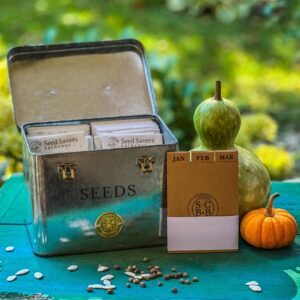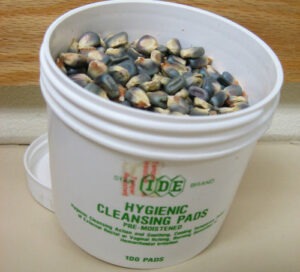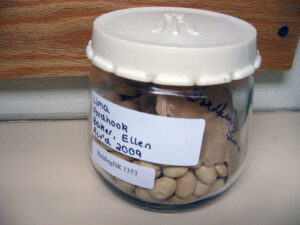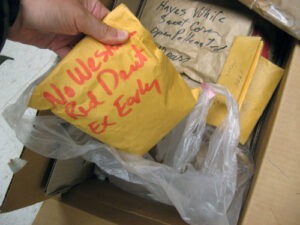Explore More
How to Store Seeds
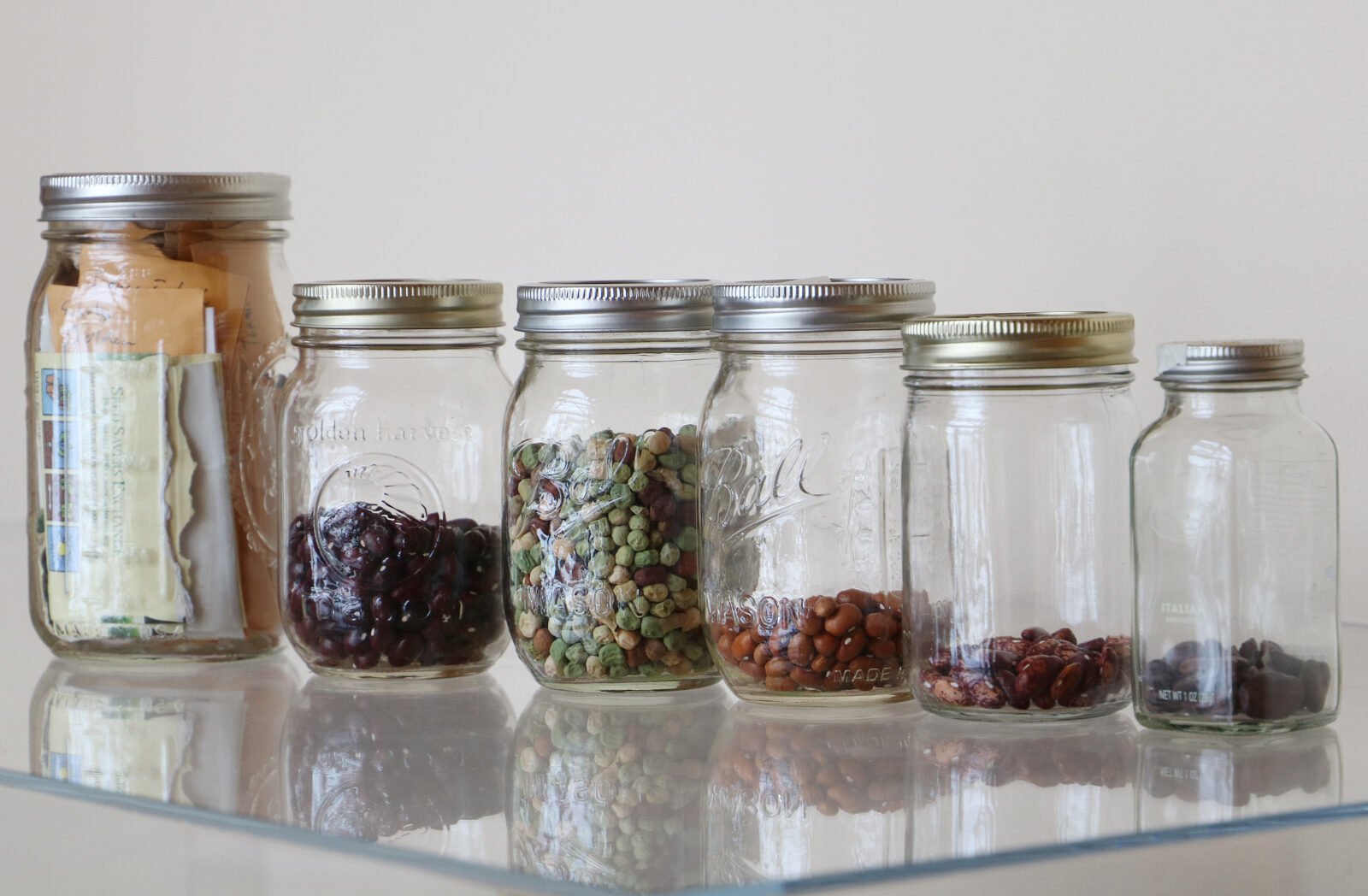
How to Store Seeds

You found a rare seed and excitedly scooped it up. Or maybe you stumbled upon a really great stock-up sale or attended a seed swap and came away with new treasures.
And then you remember: planting is months away.
Protect your finds and ensure your seeds are viable when the planting time is right with proper seed storage. It doesn’t take much, especially if you are storing seeds for two years or less. In fact, you probably have everything you need to dry and store seeds in your home! A cool, dark, dry, and pest-free spot is all you need.
But there are certainly rules of thumb to follow when optimizing the long-term viability of seeds. Keep reading to learn how to dry, protect, and store seeds.
Why is proper seed storage important?
Seeds are embryos encased in a womb shell, or, as the Occidental Arts and Ecology Center explains, “A seed is a plant in a box with its lunch.”
Because seeds are alive, they’ll inevitably lose viability as environmental factors are wont to encroach. Leaving seeds in the sun on your car dash, lying around the kitchen sink, or left outside exposed to the elements are all liable to negatively impact your seed’s viability.
By keeping seeds in a steady-state environment, you reduce the chance of them going through environmental peer pressure; they’ll continue to remain viable and well-adjusted.
Still, while it’s important to properly store your treasured seeds, it’s worth noting that seeds in general have evolved to be quite resilient. Seeds can be harvested and some can live in storage longer than expected. A farmer we met in California claims he had forgotten a large grain sack filled with Swiss chard in the back corner of his barn dated from 1995 – he planted the seeds last year, and wouldn’t you know? Near every seed germinated.
Seed Storage Tip 1: Maintain Cool Conditions
Keep seeds out of direct sunlight in a cool spot that maintains a fairly consistent temperature. Consider a cold closet, a basement, or a room on the north side of your home that remains cool year-round.
Freezing isn’t necessary for short-term storage, but you can refrigerate seeds, provided they—and your refrigerator—are sufficiently dry. Freezing seeds with any remaining moisture can result in frost damage.
Storing seeds in a climate-controlled room or fridge can maximize how long the seeds will remain viable. At Heritage Farm, we use climate-controlled rooms to keep the precious seeds in our seed bank collection viable for many years.
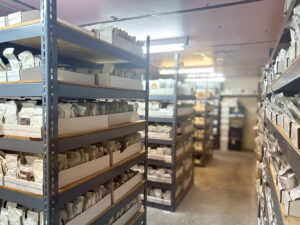
Seed Storage Tip 2: Maintain Dark Conditions
Sunlight is a signal to seeds that it’s time to sprout, and also encourages microbes to metabolize. For these reasons, it’s important to keep stored seeds out of the sun, such as in a dark room.
If you’re storing seeds in a fridge, this shouldn’t be a concern. If you’re unable to find a dark location, store seeds in opaque containers that block light.
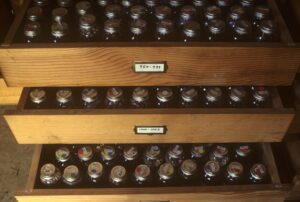
Seed Storage Tip 3: Maintain Dry Conditions
All seeds need to germinate is sufficient water and temperatures that are favorable for plant growth. Make sure your seeds don’t sprout or mold by storing them in a spot that isn’t humid and ensure the seeds are dry before sealing them in a container.
Moisture is an especially important factor if you are freezing or refrigerating your seeds. If seeds are too wet, they can rot in the refrigerator or suffer frost damage in the freezer. If you store seeds in the refrigerator or freezer, place the packets in an air-tight container and ensure the seeds are properly dried to begin with.
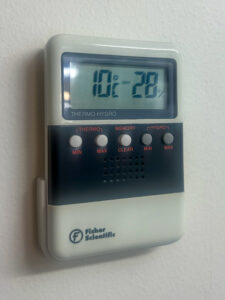
Relative Humidity
The relative humidity of the place you dry seeds and the area where seeds are stored is important to keep seeds dry. A relative humidity of 40% or lower is best for both drying and storing seeds.
To be sure that this is the case, or if you aren’t sure of the humidity levels in the place or places you are storing seeds, you can get a humidity gauge to monitor relative humidity. (See above photo)
If you are storing seeds you’ve saved yourself (bravo!), follow the correct seed-saving processes to ensure they are dry. For more information on storing specific crop seeds, check out our crop-by-crop growing guides.
Tips for Drying Seeds
Generally, dry seeds can be achieved by leaving seeds spread out on a surface where airflow is able to reach all of the seeds.
While a setup as simple as spreading them thinly on a paper plate or coffee filter and leaving them for a week is adequate, drying will be more effective if seeds are spread on a screen so that air can reach the bottoms of the seeds. (Using a fan to blow air on them works well.)
Another way to dry small amounts of seed is by hanging the seeds in blossom bags in a cool, dry place.

If you’re not sure if they’re dried enough, try snapping or crushing a few seeds. If they shatter or break cleanly, they’re ready for storage. If they bend, squish, or smash, give them more time to dry before storing.

Before you place your seeds in storage, it’s important that they are dry. Most seeds take anywhere from a few days to a few weeks to dry completely.
Consistency is key when it comes to temperature and humidity levels. Avoid storing seeds in a spot that isn’t climate-controlled, like a garage or shed, where temperatures and moisture levels can fluctuate wildly.
A relativity of 40% or less is best for drying seeds for longevity. If you don’t have any way to dry down your seeds in a place with 40% relative humidity or less, many kinds of seeds might not stay viable for more than one or two years.
Seed Storage Tip 4: Protect the Seeds
We’ve all had a plant or two that’s caught the attention of a pest. Critters, rodents, and bugs also enjoy nibbling on seeds that are waiting to be planted. Choose a storage spot that is pest-free and you can keep a close eye on it to ensure it remains that way.
Glass jars, metal containers, or wire mesh can further protect seeds from invaders. Other good options for storing seeds include plastic pill bottles or Ziploc bags.
However, it can be good to give seeds a little breathing room if possible for you.
When using a storage area that is cool and dry year-round, you may be able to keep seeds in paper bags, mesh bags, or envelopes in what is called “open storage”. Moisture and heat generated by the seed during respiration can escape through these gas-permeable containers. This is also a smart tactic when you aren’t sure about the moisture content of the seed. But you will still want to take precautions to protect your seeds from pests.
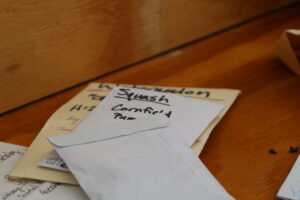
Seeds purchased from a garden store, or from our website will store just fine in the envelope they came in, plus retail seed packets have all the information necessary for planting and caring for the seeds.
For even more optimized storage, you may store the seed packets inside of another container that is sealed against moisture.
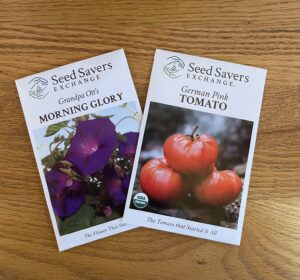
How long will seeds remain viable?
How long seeds keep depends on the crop type. Some seeds do not fare as well in storage. Crops like parsnip, onions, and leeks are notoriously short-lived and lose viability in 1-2 years. For these, climate-controlled storage is best as seeds from these varieties that are stored at or near room temperature will quickly lose their ability to germinate and grow.
On the other hand, crops like cabbage and squash can be viable for over five years, given proper storage. To learn more about the viability of seeds for specific crop types, explore our crop-by-crop growing guides.
With these safeguards in place, you’ll be able to plant your seeds later and enjoy watching them grow.
More creative ways to store seeds
Over the years, Seed Savers Exchange has received thousands of seed donations, packaged in a wide variety of vessels! Some examples of creative ways people have stored seeds include:
- Old coffee cans
- Brown paper bags
- Pill bottles
- Ziplocks
- Glass jars
- Metal containers
- Old lunchboxes
Perhaps one of the most creative way SSE has received a seed donation is packaged in nylon stockings:
Nylon stockings are the ultimate multipurpose tool. They keep legs warm and physical imperfections under wraps; they are maggot barriers for emerging apples; and, in a pinch, they’re nice material for that last minute bungee cord. But we at Seed Savers have been privy to a very unsung use for the common pantyhose: they make a darned safe way to mail your prized heirloom seeds. According to one individual, that is, who sent her favorite beans to the organization snug in a box of tights.
Seed storage tools from our store
- Kraft self-sealing seed packets: Our go-to seed-saving envelope; used for flower, fruit, and vegetable seeds.
- Glassine packets: These air and water resistant envelops are perfect for storing smaller seeds like those from lettuce, carrots, and flowers.
- Blossom bags: In addition for their use as an isolation method for maintaining varieties, these bags can be helpful for drying and storing seeds.
- Seed storage tin: This galvanized seed storage tin is very practical, containing three compartments for seeds that hold even large seed packets.
- Seed saving kit: This kit has everything you need to start your seed collection, including lettuce bags, blossom bags, glassine envelopes, and a copy of The Seed Garden.
